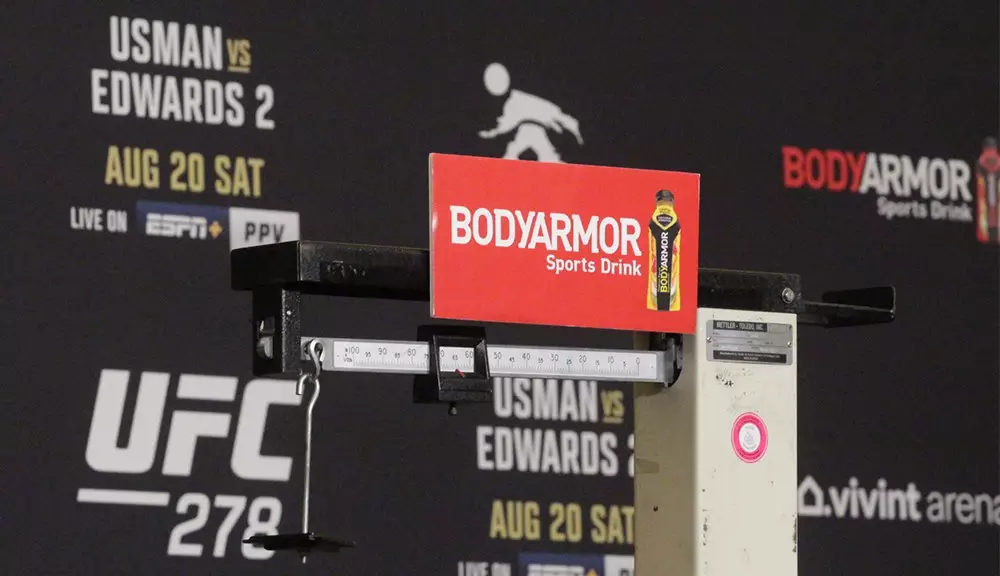Mixed Martial Arts (MMA) involves more than just intensity within the cage; it also necessitates a careful balance that fighters must manage outside of it. The weigh-in represents a critical juncture in every fight card, where athletes are required to meet specific weight limits corresponding to their designated weight classes. The consequences of missing weight can be dire—often resulting in penalties, loss of fight purses, and sometimes even match cancellations. While the sport has evolved significantly over the years, the challenge of making weight has remained a consistent hurdle for many fighters, leading to a variety of blunders that elicit both sympathy and scrutiny from fans and critics alike.
For many fighters, the weight-cutting process is both an art and a science. Athletes undergo rigorous training and dietary regimens to shed excess pounds in the weeks and days leading up to a fight. Unfortunately, this process can be fraught with difficulties. Factors such as individual metabolic rates, hydration levels, and nutritional knowledge play pivotal roles in a fighter’s ability to meet their weight requirements. Sometimes, fighter miscalculations manifest when they misjudge how much they can safely cut, leading to unforeseen consequences as weigh-in day approaches.
The physiological stress of weight cutting can lead to serious medical concerns, including dehydration, electrolyte imbalances, and in some cases, fainting. Each of these factors can dramatically affect a fighter’s performance on the day of the event, often resulting in a difficult choice: prioritize meeting the weight or maintaining health and strength for the fight.
Historically, MMA has seen several events where fighters spectacularly missed the mark on the scales. A notable example was on February 13, 2015, at the 1STBANK Center in Broomfield, Colorado. This event saw three fighters miss their contracted weights, including Patrick Walsh, who weighed in at 191.5 pounds, and James Moontasri, who was over by nearly two pounds, coming in at 158. The repeated occurrences of weight misses remind fans that while these athletes are professionals, they too face the same pitfalls as amateurs.
In another poignant instance, on September 30, 2016, during weigh-ins at the Moda Center in Portland, Oregon, three fighters similarly failed to meet their weight limits including bantamweight John Lineker who tipped the scales at 136.5 pounds. Such events often create heightened tension leading up to the fights, with fans speculating on how missed weight may impact the strategies employed by the fighters in the cage.
The ramifications of multiple fighters missing weight at a single event can present significant challenges for promoters, competitors, and fans alike. With an influx of fighters failing to meet their contractual obligations, not only does this affect the fighters’ standings, but it can also compromise the integrity of the match card itself. In some cases, fighters who miss weight offer to forfeit their share of the fight purse, but that financial sacrifice does little to mitigate the disappointment felt by both their opponents and the audience.
Additionally, repeated weigh-in failures may compel fight organizations to consider altering weight classes or enforcing stricter regulations regarding weight cuts. These discussions have culminated in various proposals for reform, aimed at protecting fighters while still maintaining the competitive spirit of the sport.
As MMA continues to grow in popularity, the issue of making weight is likely to remain a topic of significant discussion. Fighters and trainers will need to continue adapting their approaches to weight management while considering the health and safety implications involved. Meanwhile, increased awareness about the challenges of weight cutting shines a light on a crucial aspect of MMA that often goes unaddressed.
Moving forward, fostering a culture that prioritizes health alongside competitive success may require the collaboration of fighters, coaching staff, and organizations alike. Only through ongoing dialogue and proactive measures can the sport effectively address the weight-related challenges that have historically plagued it.
The world of mixed martial arts is undeniably complex, with the battle to make weight being a relentless part of the journey. Understanding these struggles gives depth to each athlete’s preparations that may easily go unnoticed amidst the excitement of fight night. As we continue following this dynamic sport, let us recognize the extraordinary efforts made by fighters, both inside and outside the cage, facing the weight of expectations and challenges head-on.

